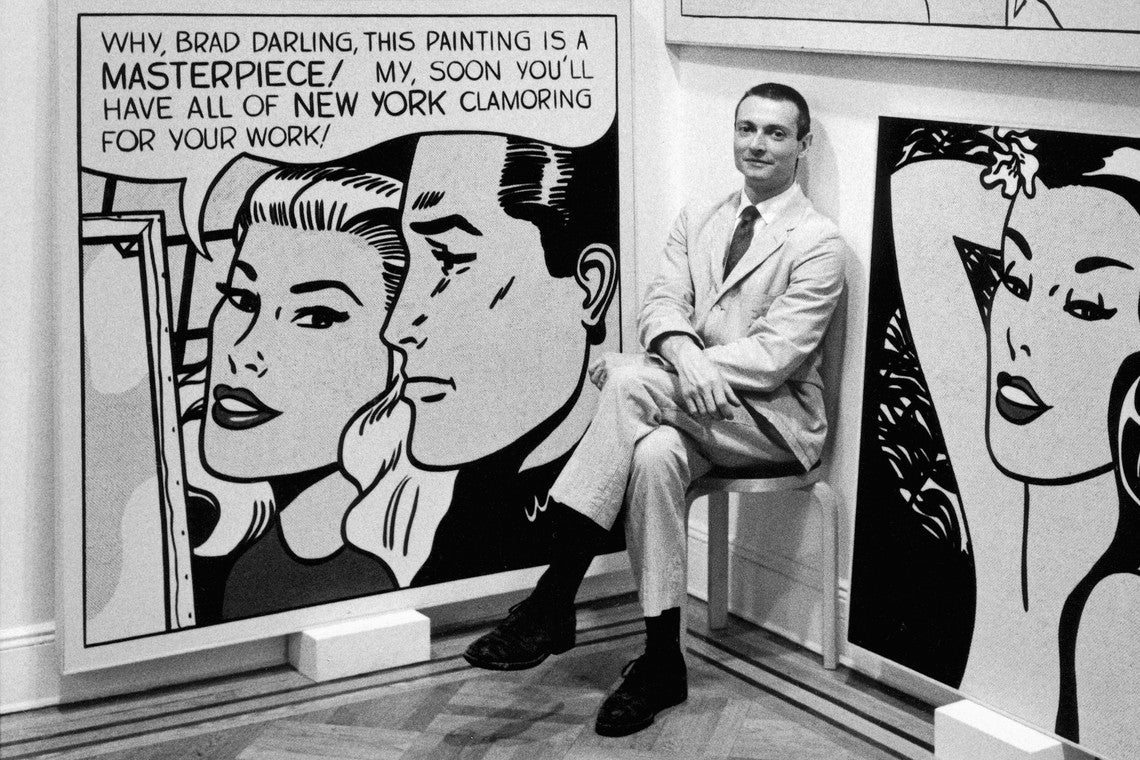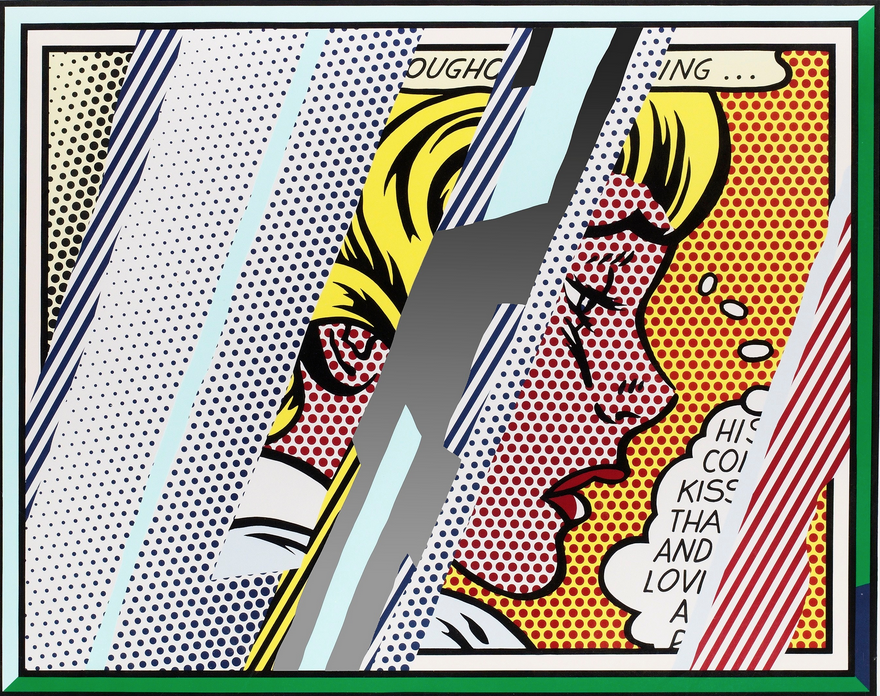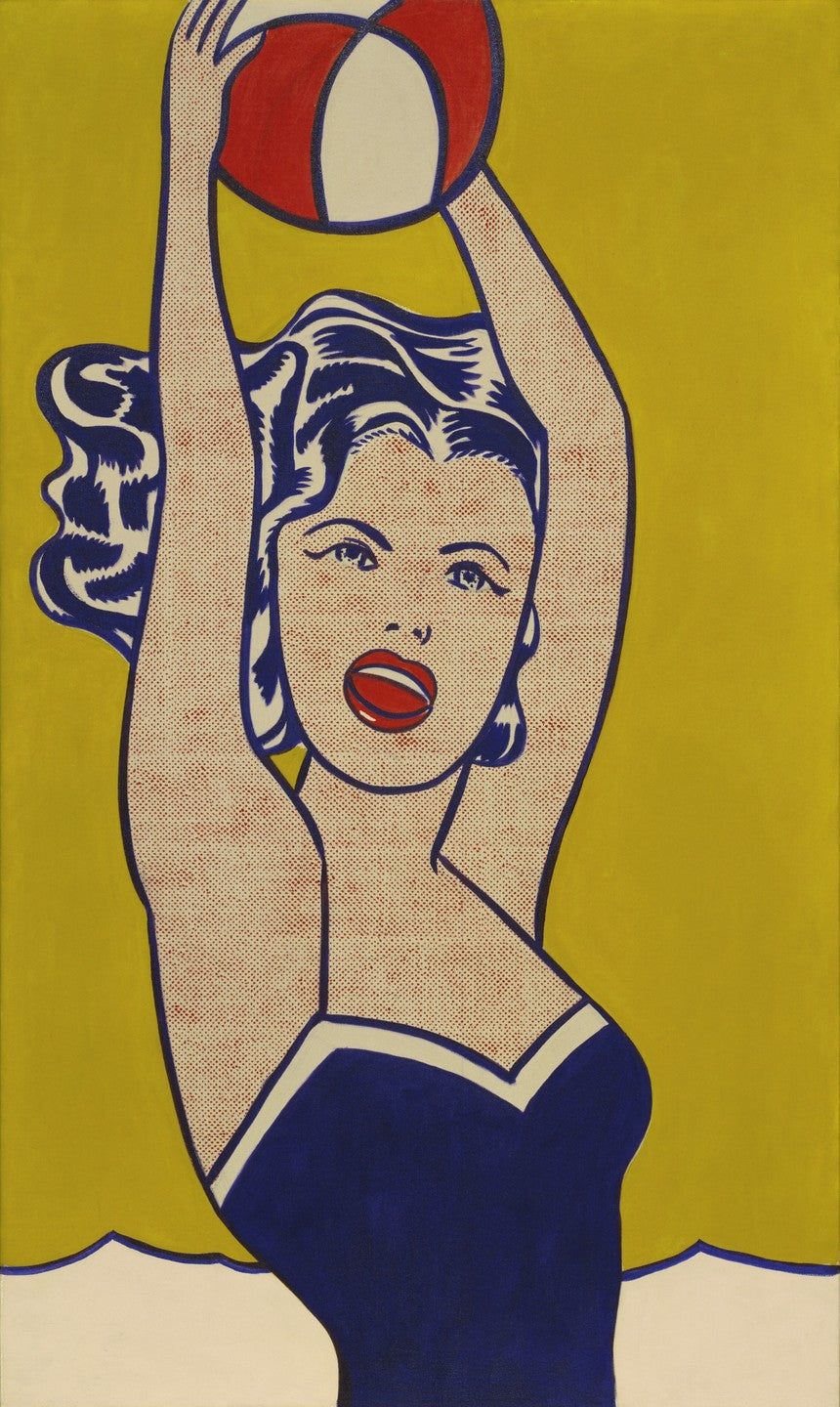
Who was Roy Lichtenstein?
On October 27, 1923, he was born Roy Lichtenstein, one of the main figures of American Pop Art. In the 1960s, he gained prominence by producing work inspired by comics, such as “In the Car” and ``Whaam!''. With his very own style, he meticulously explored the distinction between painting and commercial printing. The constant use of Benday's stitch, common in the reproduction of newspapers and magazines, thus gave prominence to his paintings. Engraving was also an integral part of his production, thus managing to increase his audience. Discover 5 essential works of art that influencedartists such as Richard Prince, Jeff Koons and Raymond Pettibon in the new article.
1.Whaam!
Created and exhibited for the first time in 1963, this canvas made with acrylic paint and oil became known as one of the icons of pop art. Part of the Tate Modern collection until today, the work “Whaam!” is based on an image from the comic strip “All American Men of War”, by DC Comics. This piece shows the great interest ofRoy Lichtenstein for comics with content related to romance and war and also his memories of when he served in the Second World War in anti-aircraft exercises. Thus, military aviation is one of the themes constantly portrayed in the works ofRoy Lichtenstein.

2.Reflections on Girl
Reflections on Girl was part of a group of seven engravings, entitled Reflections. In this series, the artist was once again inspired by comics, re-entering the popularized visual culture. The technique is the high point of these works, asRoy Lichtenstein simulated the existence of a glass or other surface, from the dark color or reflected light simulation, thus offering the viewer a different perception of reality. This idea was developed in a set of paintings, between 1988 and 1993. About the series of paintings, the artist explained:
“It started when I tried to photograph a print by Robert Rauschenberg that was under glass. But the light from a window reflected on the surface of the glass and prevented me from taking a good picture. But it gave me the idea of photographing fairly well-known works under glass, where the reflection would hide most of the work, but you could still make out what the subject was. Well, I tried to do a few photographs in this manner; but I am not much of a photographer. Later the idea occurred to me to do the same idea in painting; and I started this series on various early works of mine … It portrays a painting under glass. It is framed and the glass is preventing you from seeing the painting. Of course the reflections are just an excuse to make an abstract work, with the cartoon image being supposedly partly hidden by the reflections.

3.Drowning Girl
Run for Love! published by DC Comics in 1962, served for several decades as an inspiration for the works ofRoy Lichtenstein. In the original illustration of Drowning Girl, the girlfriend of the drowning girl appears, however the American artist dramatically cuts the image represented, she is alone screaming “I don't care”. In addition to the dramatic content of comics, he also adapted Benday's points in his works, used in mechanical reproduction mainly in comic books.

4.Two nudes
This work is part of a series of nine serigraphs produced on the theme of nudity, one of the main themes in the history of art. “Two nudes” and works such as Nus with Beach Ball and Blue Nude, with the same theme, altered the equation between the motif and the formal concerns of the composition, thus adding a new pictorial language. The fascination with the nude comes from the masters, particularly from Pablo Picasso It is Henri Matisse. As the artist stated:“I've always been interested in Matisse but maybe a little more interested in Picasso. But they are both overwhelming influences on everyone, really. Whether one tries to be like them or tries not to be like them, they're always there as presences to be dealt with. They're just too formidable to have no interest. I think that somebody who pretends he's not interested is not interested in art.”

5.Girl with ball
The Girl with ball painting was inspired by a hotel ad image in the Pocono Mountains of Pennsylvania.Roy Lichtenstein modified the image and introduced his influences: the idea of comics with intense coloring in a primary color palette and exaggeration of the Benday process. By choosing for his common themes, as it is, the American artist challenged the aesthetic orthodoxy of the time, which still belonged to abstract expressionism.

